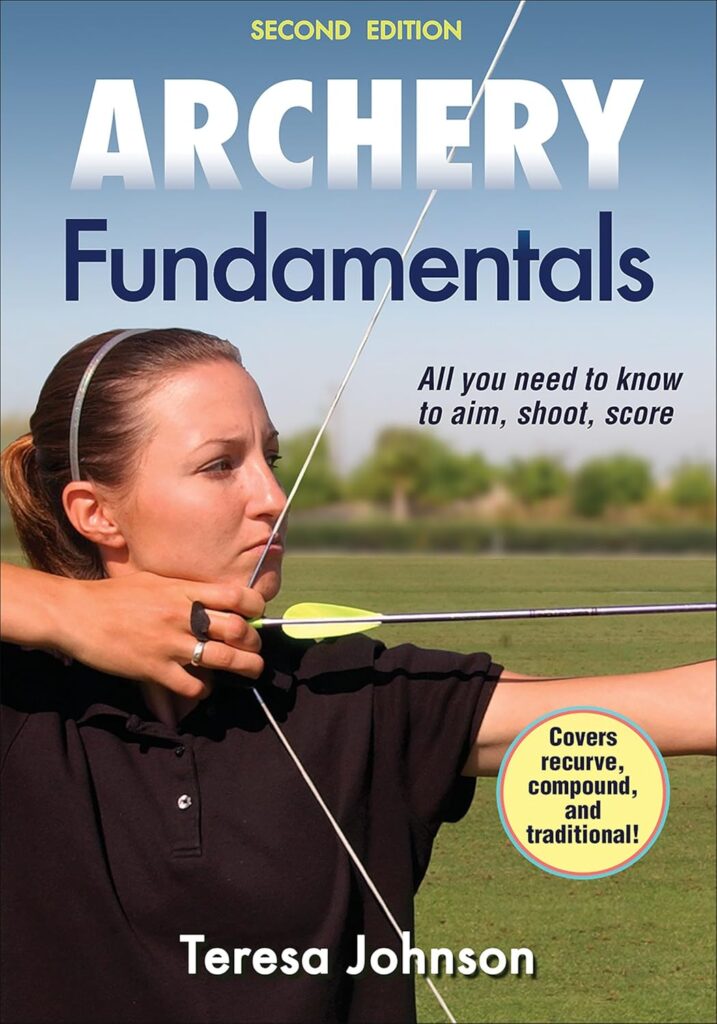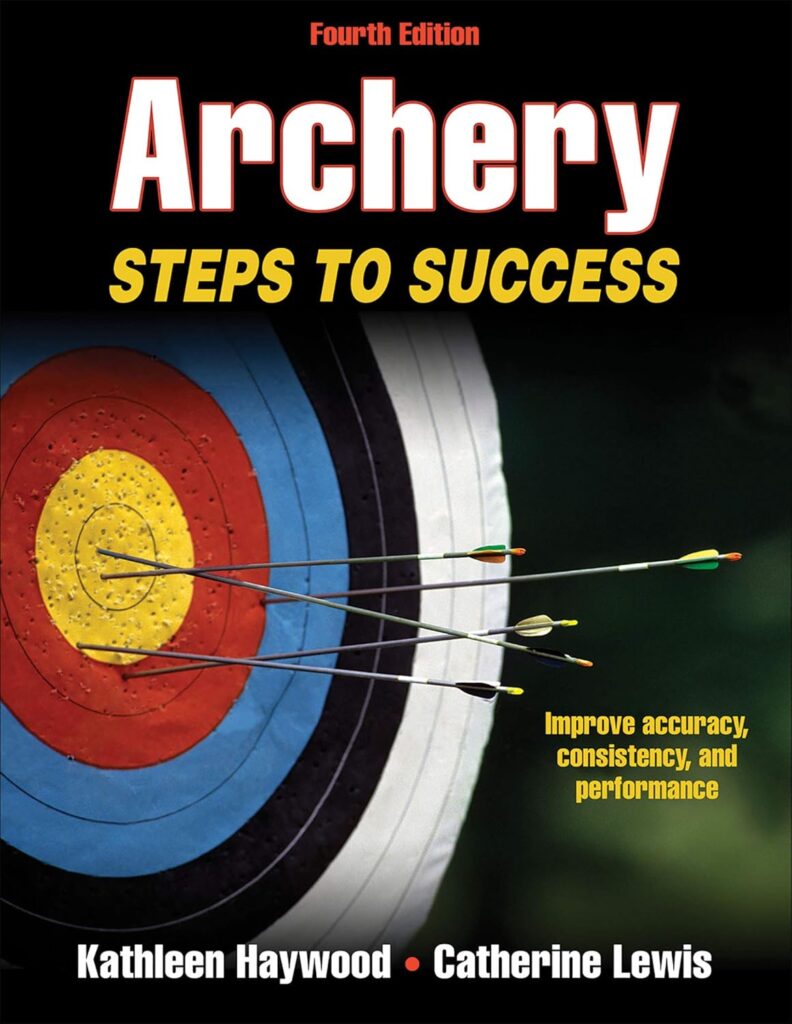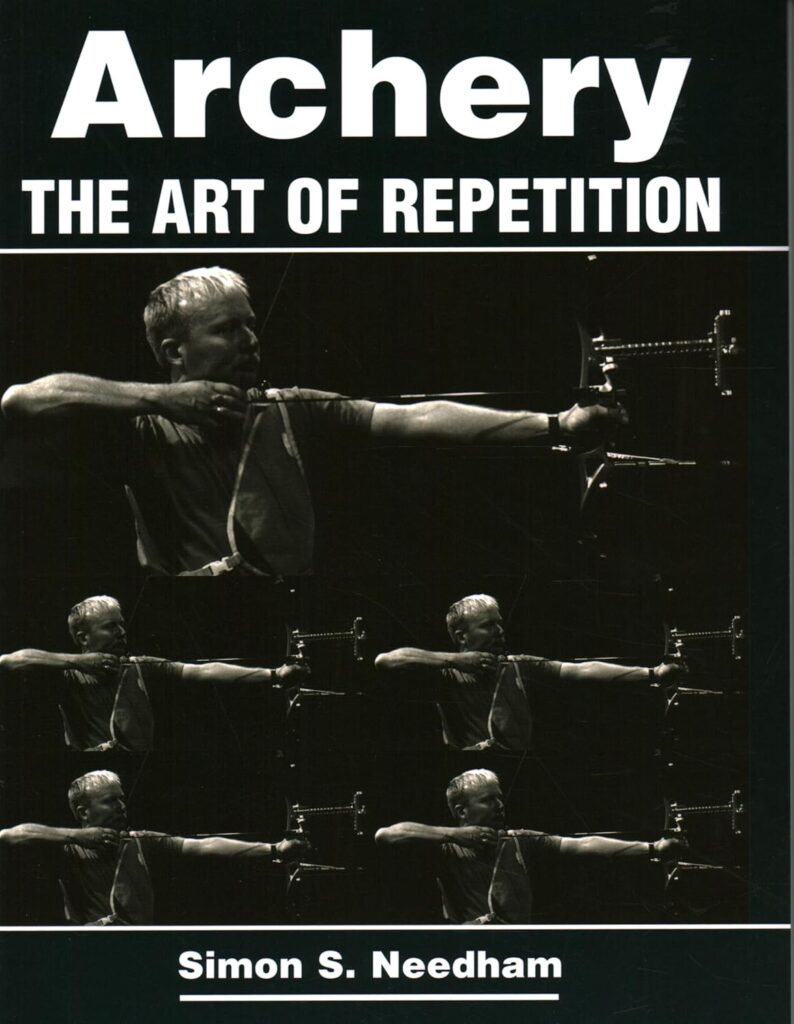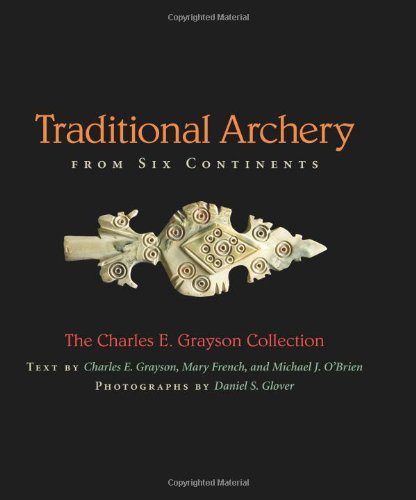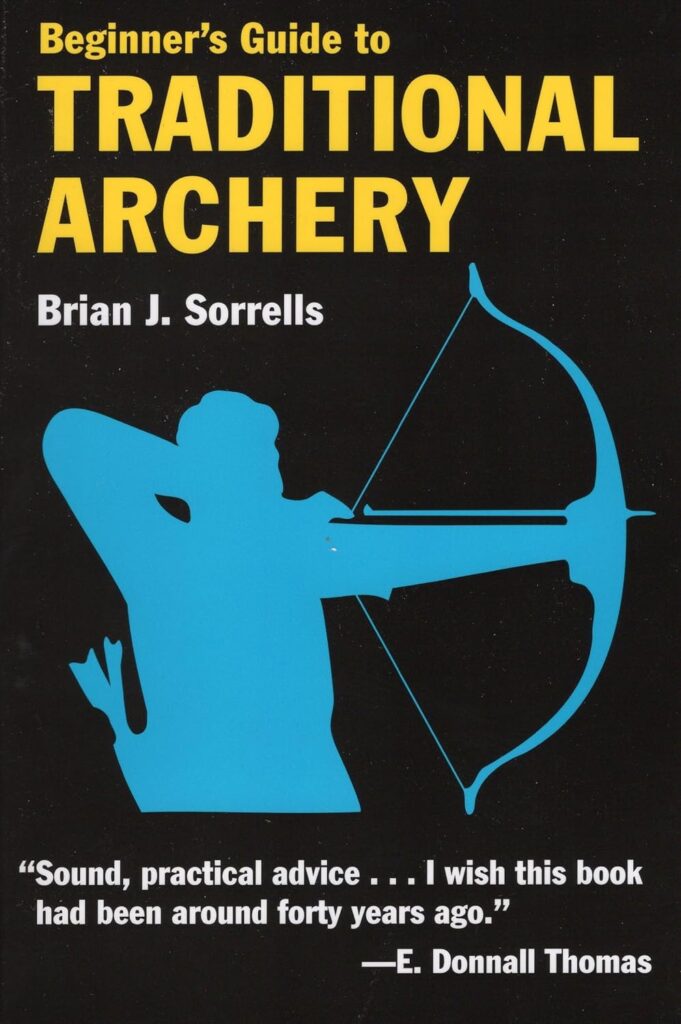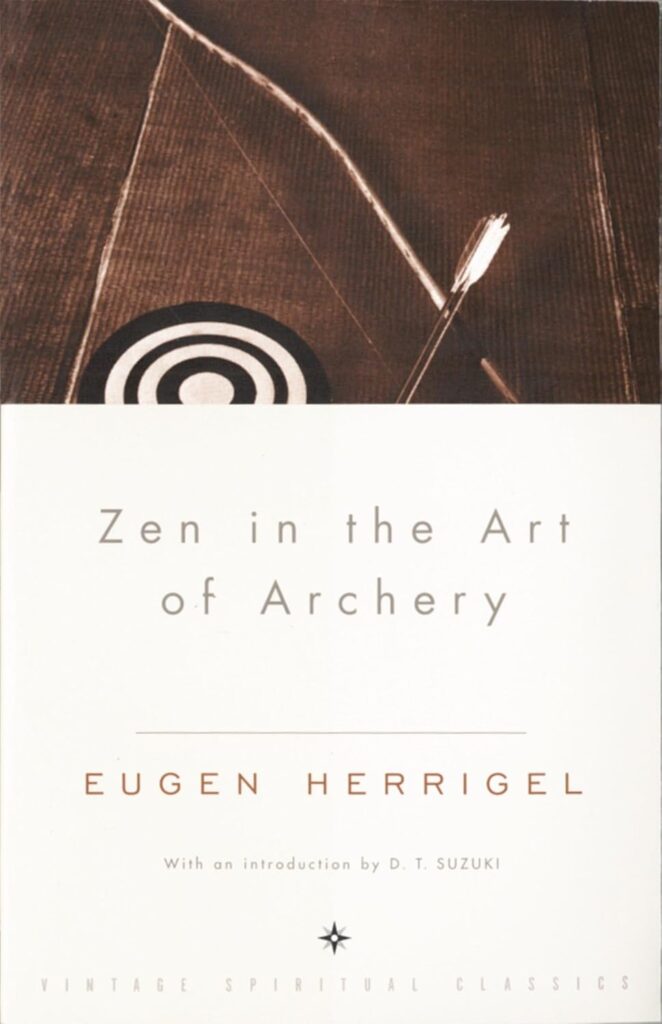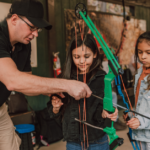As an avid archer, I’ve explored countless archery books over the years. For those just starting out in this ancient and noble sport, finding the right resources can make all the difference.
In this article, I’ll share my top 5 picks for the best archery books tailored specifically for beginners.
These selections will provide you with a solid foundation in technique, equipment knowledge, and the rich history of archery.
Just a heads-up: This post contains affiliate links, which means if you decide to purchase a book through my link, I may earn a small commission—at no extra cost to you. I only recommend books that I genuinely believe will help beginners master the art of archery.
Now, let’s dive into these top picks to help you hit the bullseye!
1. “Archery Fundamentals” by Teresa Johnson
“Archery Fundamentals” is an excellent starting point for any novice archer. Teresa Johnson, a renowned archery coach and author, has crafted a comprehensive guide that covers all the basics you need to know.
Key Features:
- Clear, step-by-step instructions for proper shooting form
- Detailed illustrations and photographs
- Advice on choosing the right equipment
- Safety guidelines and range etiquette
Johnson’s writing style is engaging and easy to understand, making complex concepts accessible to beginners. The book includes practical exercises to help you improve your technique.
One particularly helpful aspect is the section on troubleshooting common beginner mistakes.
This can save you a lot of frustration as you’re starting out.
Johnson provides clear explanations of why certain errors occur and offers practical solutions to correct them. For example, she addresses issues like arrow plucking, inconsistent anchor points, and improper bow grip.
By understanding these common pitfalls, you’ll be better equipped to recognize and correct them in your own shooting.
The book’s layout is well-organized, allowing you to easily find specific topics when you need to refer back to them. Each chapter builds upon the previous one, creating a logical progression that mirrors the learning process of a new archer.
You’ll start with the basics of stance and posture, move on to proper draw technique, and then study more advanced topics like aiming and release.
Johnson also includes a section on mental preparation, which is often overlooked in beginner archery books. She talks techniques for maintaining focus, managing competition nerves, and developing a positive mindset.
These mental skills are just as important as physical technique when it comes to consistent shooting.
The equipment section is particularly valuable for newcomers. Johnson breaks down the different types of bows, explaining the pros and cons of recurve, compound, and traditional bows.
She also covers essential accessories like arrows, quivers, arm guards, and finger tabs, helping you make informed decisions about your gear.
While the book is thorough, some readers might find it a bit text-heavy compared to more visually-oriented guides. However, this depth of information is what makes it such a valuable resource for those who want to truly understand the fundamentals of archery.
2. “Archery: Steps to Success” by Kathleen Haywood and Catherine Lewis
For those who prefer a more structured learning approach, “Archery: Steps to Success” offers a progressive, skill-building program that’s perfect for beginners.
Key Features:
- 11-step program for developing archery skills
- Over 100 drills and exercises
- Self-assessment tests to track progress
- Tips for choosing and maintaining equipment
The systematic approach of this book is it’s standout feature. Each chapter builds upon the previous one, allowing you to gradually develop your skills.
The self-assessment tests are particularly useful, as they help you identify areas that need more work.
The book covers both traditional and modern archery techniques, making it versatile for different interests. Haywood and Lewis have done an excellent job of breaking down complex movements into manageable steps, which is crucial for beginners who might feel overwhelmed by the intricacies of proper form.
The 11-step program covers everything from basic safety and equipment setup to advanced techniques like string walking and face walking. Each step includes clear goals, detailed instructions, and a series of drills to reinforce the skills being taught.
One of the standout features of this book is the extensive collection of drills and exercises. These practical activities give you concrete ways to apply what you’ve learned and improve your skills.
The variety of exercises also helps keep your practice sessions interesting and engaging.
For example, one drill focuses on developing a consistent anchor point. You’ll start by drawing the bow without an arrow, using a mirror to check your form.
As you progress, you’ll add an arrow and practice maintaining that anchor point while aiming at different targets.
This kind of structured practice is invaluable for developing muscle memory and consistency.
The equipment section is particularly helpful for newcomers who might be unsure about what gear to purchase. Haywood and Lewis provide clear guidance on selecting bows, arrows, and accessories that are suitable for beginners.
They also include tips on maintaining your equipment, which is essential for both safety and performance.
The book also addresses the mental aspects of archery, offering strategies for focus, concentration, and dealing with competition pressure. This holistic approach ensures that you’re developing not just physical skills, and the mental fortitude needed for success in archery.
However, some readers might find the structured approach a bit rigid if they prefer a more freestyle learning method. The step-by-step nature of the book may not appeal to those who like to jump around and explore different aspects of archery at their own pace.
3. “Archery: The Art of Repetition” by Simon Needham
Simon Needham, an Olympic archery coach, brings his wealth of experience to this insightful book that focuses on the importance of consistent practice and technique refinement.
Key Features:
- In-depth analysis of shooting technique
- Mental preparation strategies
- Equipment selection and tuning advice
- Competition preparation tips
The emphasis on the mental aspects of archery sets this book apart. Needham explores the psychological factors that can affect your shooting, offering valuable advice on focus and concentration.
This is an often-overlooked aspect of archery training, especially for beginners, but it’s crucial for long-term success in the sport.
Needham explores topics like visualization techniques, managing performance anxiety, and developing a pre-shot routine. He explains how these mental skills can help you maintain consistency and perform well under pressure, whether you’re practicing alone or competing in a tournament.
The book’s title suggests a focus on repetition, and Needham delivers on this promise by emphasizing the importance of consistent, quality practice. He provides detailed guidance on how to structure your practice sessions to maximize improvement and avoid developing bad habits.
For example, Needham introduces the concept of “perfect practice,” where you focus on executing each shot with perfect form, as opposed to simply shooting as many arrows as possible. He explains how this approach helps ingrain good habits and leads to more consistent performance over time.
While the title suggests a focus on repetition, the book covers a wide range of topics that are crucial for beginners. The section on equipment tuning is particularly helpful, as it’s often overlooked in beginner-focused books.
Needham explains not just how to choose the right equipment, but how to fine-tune it for optimal performance.
He covers topics like bow tuning, arrow spine selection, and nocking point adjustment. These technical aspects might seem daunting at first, but Needham breaks them down into understandable steps that even beginners can follow.
Understanding these concepts early on can save you a lot of frustration as you progress in the sport.
The competition preparation tips are a valuable addition, even for beginners who might not be thinking about competing yet. These insights can help you develop a competitive mindset and understand what to expect if you decide to join archery tournaments in the future.
Needham covers topics like tournament etiquette, managing nerves on the shooting line, and developing a competition strategy. He also provides advice on how to analyze your performance after a competition, helping you identify areas for improvement.
One potential drawback is that some of the more advanced topics might be overwhelming for absolute beginners. However, it’s a book that you can grow into as your skills develop.
The depth of information makes it a resource you’ll likely return to repeatedly as you progress in your archery journey.
4. “Traditional Archery from Six Continents” by Charles E. Grayson
For those interested in the historical and cultural aspects of archery, this unique book offers a fascinating look at traditional archery practices from around the world.
Key Features:
- Exploration of archery traditions from six continents
- Detailed descriptions of traditional bows and arrows
- Historical context for various archery styles
- Beautiful photographs and illustrations
This book connects modern archery to it’s rich historical roots. It’s not just a how-to guide, but a move through the cultural significance of archery across different societies.
Grayson’s work provides a broader perspective on archery that can deepen your appreciation for the sport.
The book takes you on a global tour of archery traditions, from the powerful English longbow to the compact Asian composite bow. Grayson explores the unique characteristics of each style, explaining how different cultures adapted their archery equipment and techniques to suit their environments and needs.
For example, you’ll learn about the intricate horn-and-sinew construction of Mongolian composite bows, designed for horseback archery on the steppes.
You’ll also learn the specialized techniques used by Arctic hunters to craft bows from scarce materials like driftwood and animal sinew.
The book provides insights into different shooting techniques and bow designs, which can be inspiring for beginners looking to explore various styles of archery.
You’ll learn about the thumb draw technique used in many Asian archery traditions, the Mediterranean draw common in Western archery, and unique release aids like the Mongolian thumb ring.
One of the most captivating aspects of this book is it’s collection of beautiful photographs and illustrations. These visuals make the book a joy to read and help you understand the intricate details of traditional bows and arrows from around the world.
You’ll see close-up images of intricate bow carvings, detailed diagrams of arrow fletching techniques, and photographs of archers demonstrating traditional shooting styles.
Grayson also explores the cultural and spiritual significance of archery in different societies. You’ll learn about the role of archery in Japanese Zen philosophy, the symbolism of archery in Native American cultures, and the place of archery in medieval European warfare and hunting.
While not strictly a technique manual, this book offers valuable context that can enhance your overall archery experience. Understanding the historical and cultural significance of archery can provide motivation and inspiration as you develop your skills.
It can also give you a deeper appreciation for the engineering and craftsmanship that goes into modern archery equipment.
However, those looking for a purely instructional guide might need to pair this with a more technique-focused book. “Traditional Archery from Six Continents” is best viewed as a complement to more practical guides, offering a rich background that can tell and inspire your archery practice.
5. “Beginner’s Guide to Traditional Archery” by Brian J. Sorrells
Rounding out our list is Brian J. Sorrells’ guide, which focuses specifically on traditional archery – a great choice for those drawn to the simplicity and challenge of longbows and recurve bows.
Key Features:
- Introduction to traditional archery equipment
- Shooting techniques for longbows and recurve bows
- Guidance on arrow selection and tuning
- Tips for hunting and target archery
The focus on traditional archery sets this book apart, which can be particularly appealing to beginners attracted to the sport’s historical aspects. Sorrells does an excellent job of explaining the nuances of shooting without sights or other modern aids.
He starts by introducing the different types of traditional bows, including longbows, recurve bows, and self bows. Sorrells explains the characteristics of each, helping you understand which might be best suited to your interests and shooting style.
The book includes practical advice on crafting your own arrows and even building a simple bow, which can be a rewarding project for hands-on learners.
These DIY aspects of the book provide a deeper understanding of archery equipment and offer a way to connect more intimately with the sport.
For example, Sorrells walks you through the process of selecting suitable wood for arrows, cutting and straightening shafts, and attaching feathers and points.
He also provides instructions for making a simple wooden bow, which can be a great way to understand the principles of bow design and construction.
The section on instinctive shooting is particularly well-written and can help beginners develop this challenging but rewarding skill.
Sorrells breaks down the concept of instinctive shooting in a way that makes it accessible to newcomers, providing exercises and tips to help you develop this intuitive shooting style.
He explains how instinctive shooting differs from aiming with sights, and why it’s particularly well-suited to traditional archery. Sorrells provides a series of drills to help you develop your instinctive shooting skills, starting with close-range shots and gradually increasing the distance as your accuracy improves.
Sorrells also addresses the differences between target archery and bowhunting, providing valuable insights for those interested in either or both aspects of the sport. His tips on fieldcraft and hunting ethics are particularly valuable for those considering bowhunting.
For target archers, he offers advice on setting up a backyard range and progressing through different target sizes and distances. For those interested in hunting, Sorrells covers topics like shot placement, tracking, and field dressing game.
The book also includes a section on arrow selection and tuning, which is crucial for traditional archery. Sorrells explains how to match arrows to your bow’s draw weight and your draw length, and how to fine-tune your arrows for optimal flight.
While the focus on traditional archery is a strength, it may not be the best choice for those primarily interested in modern compound bows or Olympic-style target archery.
However, even if you’re planning to shoot with modern equipment, the basic principles covered in this book can still be useful.
Archery as a Path to Mindfulness: Exploring the Zen Connection
If you’re looking to expand your archery journey beyond physical skill and explore the mental and spiritual side of the sport, Zen in the Art of Archery by Eugen Herrigel offers a captivating perspective on how archery can become a practice of mindfulness and inner peace.
Zen in the Art of Archery by Eugen Herrigel
Adding a unique perspective to our list is Eugen Herrigel’s timeless classic, Zen in the Art of Archery, which explores the meditative and philosophical dimensions of archery. This book isn’t just about hitting the target—it’s about how archery can become a practice of mindfulness and inner calm.
Key Features:
- An introduction to the connection between Zen philosophy and archery
- Insights into how archery can be a form of meditation
- Detailed narrative of Herrigel’s personal journey into the art of archery
- Exploration of how mastering archery techniques parallels the pursuit of self-mastery
Herrigel’s work stands out because it frames archery not merely as a sport or skill, but as a spiritual discipline. He shares his experience studying archery under a Japanese master, delving into how the practice became a way to cultivate patience, concentration, and serenity.
Through Herrigel’s vivid storytelling, readers gain an understanding of how archery transcends the physical act of shooting.
The book illustrates that success in archery comes not from force or rigid control, but from a state of relaxed focus and detachment from the outcome—a concept deeply rooted in Zen teachings.
For beginners, this book offers a refreshing take by emphasizing the mental aspect of archery, which is often overlooked in more technical guides.
While you won’t find detailed instructions on bow types or arrow selection, Herrigel’s emphasis on breathing, posture, and the mindset required for effective shooting can be a valuable complement to more traditional archery manuals.
One of the most captivating elements of the book is the way Herrigel describes the moment when “it shoots”—when the archer, the bow, and the arrow act as one, without conscious effort.
This profound realization encapsulates the heart of Zen practice and offers an inspiring vision for those looking to find deeper meaning in their archery journey.
Whether you’re drawn to archery for sport, recreation, or personal growth, Zen in the Art of Archery provides an eye-opening exploration of how the practice can nurture both body and mind.
It’s an ideal companion for those seeking not only to improve their shooting skills but also to find a sense of balance and tranquility in their lives.
While it doesn’t cover the technical aspects of archery in depth, this book is perfect for readers who want to enhance their practice by incorporating mindfulness and philosophical reflection.
Key Takeaways
These five books offer a wealth of knowledge for beginning archers. Whether you’re interested in modern target archery, traditional techniques, or the rich history of the sport, there’s something here for everyone.
Each book brings a unique perspective and set of insights that can help you develop a well-rounded understanding of archery.
Remember, while these books are excellent resources, nothing beats hands-on practice and guidance from experienced archers. Use these books to supplement your learning, but don’t forget to get out there and shoot!
The combination of theoretical knowledge from these books and practical experience will set you on the path to becoming a skilled archer.
People Also Asked
What is the best bow for beginners in archery?
For beginners, a recurve bow is often recommended. It’s simpler to use than a compound bow and allows you to focus on developing proper form and technique. Look for a bow with a draw weight between 20-30 pounds to start.
How long does it take to become proficient in archery?
The time it takes to become proficient varies depending on how often you practice and your natural aptitude. With regular practice (2-3 times a week), many beginners see significant improvement within 3-6 months.
What are the basic rules of archery?
The basic rules include always pointing the bow in a safe direction, never dry firing (releasing the string without an arrow), and following range etiquette. In competition, rules govern scoring, time limits, and equipment specifications.
Is archery an expensive hobby to start?
Starting archery can be relatively affordable. A basic beginner’s setup (bow, arrows, and essential accessories) can cost around $150-$300.
As you progress, you may choose to invest in higher-quality equipment.
Can I practice archery at home?
Yes, you can practice archery at home if you have a safe space. You’ll need a proper backstop to catch arrows and confirm you’re not shooting towards any people, animals, or property that could be damaged.
What muscles does archery work out?
Archery primarily works the muscles in your upper body, including your shoulders, back, chest, and arms. It also engages your core muscles for stability.
Is archery good for mental health?
Many archers find the sport beneficial for mental health. It can improve focus, reduce stress, and boost self-confidence.
The repetitive nature of shooting can also have a meditative effect.
What’s the difference between Olympic archery and traditional archery?
Olympic archery uses modern recurve bows with sights and stabilizers, while traditional archery typically involves longbows or traditional recurve bows without sights. Olympic archery focuses on target shooting, while traditional archery can include both target and hunting applications.
How important is proper form in archery?
Proper form is crucial in archery. It ensures consistency, improves accuracy, and helps prevent injury.
Good form is the foundation upon which all other archery skills are built.
Can archery be dangerous?
Like any sport involving equipment, archery can be dangerous if proper safety protocols aren’t followed. However, when practiced responsibly, archery is a very safe sport with a low injury rate compared to many other activities.

